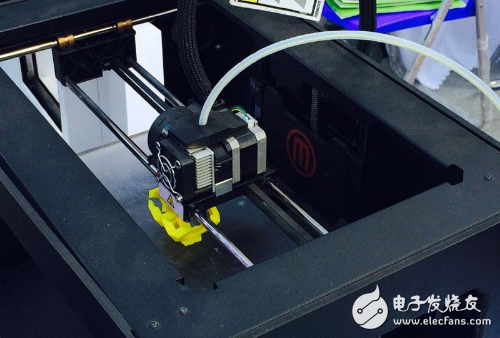The Nano Racing team used 3D printing technology in both the development phase and the final production. 3D printing is used in every step of the product development phase, including appearance testing and crash testing.
Nano-Racing produces 3D printing technology for drones
The types of drones are very rich. If they are divided according to their purposes, they can be divided into military drones and civilian drones. Whether it is manufacturing military drones or manufacturing civilian drones, there is room for application of 3D printing technology. In the field of civil drone manufacturing, 3D printing technology has created opportunities for some entrepreneurial teams to enter the drone market. Nano-Racing is such a startup that produces competitive civil drones.
Nano-Racing is a young company founded in 2015 to manufacture competitive drones. Competitive drones are an emerging field in the drone market, and the customer groups they face are those who participate in professional drone competitions. Usually, this professional competition drone is large in size and high in price, and is not suitable for the mass consumer group.

With the love of drone competition, the Nano-Racing team hopes to bring more competitive players to the more popular players. A mini Nano Racer drone was born. Although the Sparrow is small and complete, the Nano Racer not only completes various flight movements, but also integrates FPV technology. This is a new gameplay based on the remote control aviation model with a wireless camera backhaul device and a screen manipulation model on the ground. The player sees the scenery on the ground from the perspective of the pilot and feels the immersive feeling.
The Nano Racing team used 3D printing technology in both the development phase and the final production. 3D printing is used in every step of the product development phase, including appearance testing and crash testing. Nano Racing has invited a large number of professionals and drone competition enthusiasts to test, optimize the product once feedback is received, and then use 3D printing to create a new prototype for the next round of testing. Cost and lead times are better controlled because no injection molds are used in the manufacture of small batch prototypes.
Nano-Racing uses FDM, SLA and SLS three different 3D printing technologies in the development process. SLA and SLS 3D printing are performed by Sculpteo online 3D printing service, where Nano-Racing can flexibly choose different 3D. The printing process, if encountered in special requirements, such as the minimum layer thickness requirements exceed the requirements of the printing platform, Sculpteo also flexible solution.
After several product design iterations, Nano-Racing has delivered the first products to customers. During the iterative process of product design, the Nano-Racing team explored the clever body design, that is, the UAV body has an interlocking design, the assembly process is very simple, no screws and welding are required. This specially designed body is 3D printed and can be customized for production.
Of course, the design of drone products is inseparable from the design software of the force, Nano Racing uses Sketchup and Solidworks software. Quickly create products with Sketchup through easy-to-use 3D design capabilities. The simulation tools in Solidworks software make a good prediction of possible problems in the product.
Charles Venayre, founder of Nano Racing, shared his personal experience in the entrepreneurial process in an interview. Especially in terms of products, Charles Venayre realized that companies want to make good products. Two ways are very important. One is to use digital simulation technology to verify before the product is produced, and the other is to continuously collect user feedback for design iteration. The first method has a large investment in manpower, material resources and financial resources, and is more suitable for enterprises with a certain scale. The second way is that there is no such high demand for financial resources. 3D printing technology plays an important role in it, enabling entrepreneurial enterprises to quickly develop physical products at a lower cost, and test and improve products in time. Market opportunities. If 3D printing technology is chosen for small batch production, it will also reduce the inventory pressure of entrepreneurial enterprises.
For 3D printing technology, the attitude of the Nano Racing team is to let go, make full use of this technology, and make the product ideas in the brain a reality. Xiao Bian believes that the Nano Racing team's sober and free attitude is not only based on a passion for entrepreneurship, but also based on a deep understanding of 3D printing technology. They understand a variety of different 3D printing processes and understand product design. How to reasonably add support structure and understand how to propose product design solutions for the advantages of 3D printing, these basic skills have increased the confidence of the Nano Racing team.
KNM5 Series Moulded Case Circuit Breaker
KNM5 series Moulded Case Circuit Breaker is MCCB , How to select good Molded Case Circuit Breaker suppliers? Korlen electric is your first choice. All moulded Case Circuit Breakers pass the CE.CB.SEMKO.SIRIM etc. Certificates.
Moulded Case Circuit Breaker /MCCB can be used to distribute electric power and protect power equipment against overload and short-current, and can change the circuit and start motor infrequently. The application of Moulded Case Circuit Breaker /MCCB is industrial.
Korlen electric also provide Miniature Circuit Breaker /MCB. Residual Current Circuit Breaker /RCCB. RCBO. Led light and so on .
KNM5 series Molded Case Circuit Breaker,Small Size Molded Case Circuit Breaker,Electrical Molded Case Circuit Breaker,Automatic Molded Case Circuit Breaker
Wenzhou Korlen Electric Appliances Co., Ltd. , https://www.korlen-electric.com